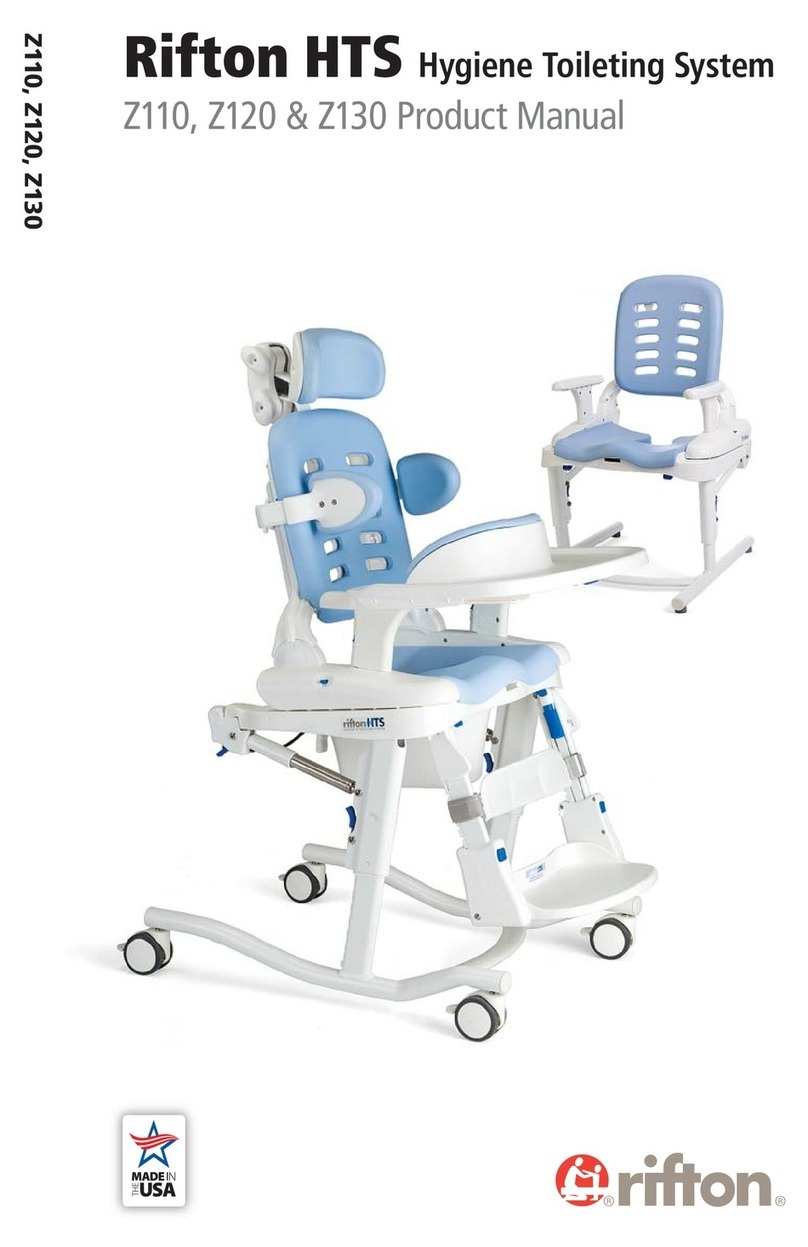5
User and item dimensions
User dimensions – inches (cm) K620 small K630 med K640 large K650 XL
Elbow height 18½-27½ (47-70) 24-35 (61-89) 32-47 (81-119) 34-49 (86-124)
Item dimensions – inches (cm) K620 small K630 med K640 large K650 XL
Floor to top of arm prompt 18½-27½
(47–70)
24– 35
(61–89)
32– 47
(81–119)
34–49
(86–124)
Overall width Standard base: 23 (58) 26 (66) 28 (71) 31½ (80)
Utility base: N/A 30 (76) 32 (81) N/A
Narrow treadmill base: 35 (89) 35 (89) 35 (89) N/A
Wide treadmill base: 40 (102) 40 (102) 40 (102) N/A
Overall length Standard base: 26 (66) 30 (76) 36 (91) 39¾ (101)
Utility base: N/A 36 (91) 40½ (103) N/A
Treadmill bases: 41 (104) 41 (104) 41 (104) N/A
Frame height Standard & utility
bases:
16– 21
(41 – 53)
21½– 27
(55 – 69)
28½–38½
(72–98)
31– 41
(79– 104)
Treadmill bases: 23 –35
(58 – 89)
23½– 36½
(60 – 93)
30–47
(76–119)
N/A
Base height
(without upper frame)
Standard & utility
bases:
11 (28) 14½ (37) 16 (41) 18½ (47)
Treadmill bases: 21 (53) 21 (53) 21 (53) N/A
Frame weight - lbs. (kg) Standard base: 11½ (5.2) 15 (6.8) 15½ (7) 22½ (10.2)
Utility base: N/A 18½ (8.4) 19¼ (8.7) N/A
Narrow treadmill base: 27½ (12.5) 27½ (12.5) 27½ (12.5) N/A
Wide treadmill base: 28 (12.7) 28 (12.7) 28 (12.7) N/A
Standard upper: 6 (2.7) 7½ (3.4) 9½ (4.4) 11 (4.9)
Dynamic upper: 7½ (3.4) 11½ (5.2) 13½ (6.1) 15 (6.8)
Dynamic upper movement Vertical: 1¼ (3.5) 2(5) 2(5) 2(5)
Horizontal: 1½ (4) 2(5) 2(5) 2(5)
Max. treadmill width Narrow treadmill base: 29 (74) 29 (74) 29 (74) N/A
Wide treadmill base: 34 (86) 34 (86) 34 (86) N/A
Max. treadmill height Treadmill bases: 11 (28) 11 (28) 11 (28) N/A
Max. working load–lbs. (kg) 75 (34) 150 (68) 200 (91) 250 (113)
Key user dimension: elbow height
Measure the vertical distance from the bent elbow to the floor while the user is standing
upright. Choose the gait trainer that allows for growth.
Important: Make sure that the chest prompt width is adequate, allowing for growth.
User’s weight must not exceed the maximum working load.
Recommended use
The Pacer gait trainer is a Class 1 medical device. It is designed to help a client learn to
walk. For a client lacking active use of his or her trunk and leg muscles, the Pacer provides
the necessary support during gait training and requires little or no weight-bearing.





























